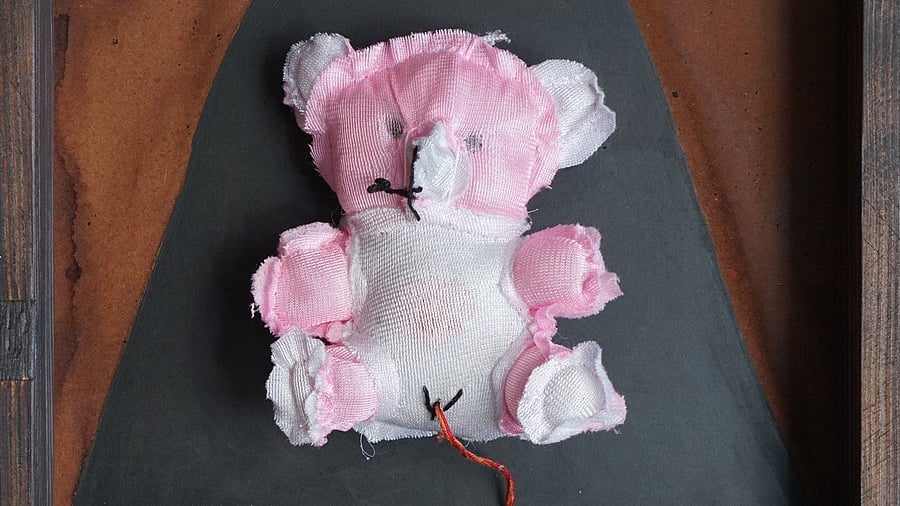
Baroda-based multimedia artist Komal Mistri spent three months in the enclosed spaces of a government and private hospital in Gujarat, where she witnessed a total of 42 deliveries. Many of these cases were unhappy stories. Documenting the process of childbirth, which has been ritualised and considered throughout civilisations as sacred and celebratory, Mistri captured the unspoken narratives that mark the transformation of a woman’s body and psyche in her just-concluded solo show titled ‘Come With Your Own Light’ at New Delhi.
In the realm of the labour room consisting of spotlighted beds and surgery tools lies the tale of embroidered bodies bewildered about whether to feel pleasure in pain or pain in pleasure. Lying on the bed, contemplating her identity, the pregnant woman wonders about her dual and frustrated state of being. “Mistri guides us through the hallowed halls of the labour room where the mechanical and the human dissolve into each other. Each image is a whispered confession, a poignant invitation to confront complex societal norms dictating the natural process of childbirth and the woman’s agency,” said Bhavna Kakar, Founder-Director, Latitude 28, where the exhibition was held.
From the beginning, Mistri, a mother to a son herself, has been creating women-centric art. She hopes her exhibition was able to build awareness and empathy. It took her a total of four years to complete, including the pandemic year and one more to find a place to display.
Mistri’s practice includes churning out memories from the objects that inform her subjects’ everyday lives. Bottles of blood, placentas, scissors, stretchers and machines serve as symbols of the mechanised nature of the labour room and the almost apathetic treatment of the mothers-to-be. To capture such images is itself an act of revelation to the artist whose personal experience with childbirth and healthcare systems marks her artistic practice.
With this documentation, Mistri has been able to capture complex emotions and difficult circumstances in women’s lives. Interventionist photographic works and found objects illustrate collective pain and deprivation. Like a family member, Mistri dons the role of a confidante, a listener to the woes and happiness of women in labour.
The exhibit also delved into the possibility of forming an archive of emotions surrounding childbirth. A vast majority of women are deprived of proper medical attention and are forced to push the limits of their physical capacity when they go into labour. Further, the socio-economic conditions of rural India constantly thrust women into a gender-discriminatory struggle of enduring pain beyond their limits.
Given that the subject of the exhibition is a heavy one, it received a range of responses from viewers. “People were intrigued by the intricate display of artworks, their immersive environment and the deliberate manipulation of space by the artist to transport viewers to the visceral landscape of a hospital ward,” said Kakar. “When the exhibition was running in Baroda, many young boys cried. Many of the women who saw it shared their own personal stories with me,” added Mistri.
As an artist, Mistri primarily relates to the identities of a woman in the domestic environment where she constantly struggles to alter her personality according to her responsibilities, thus disregarding her right to a personal space. Her body of work uses altered and constructed imagery assisted with found objects that resonate with ideas of memory, identity and space. Her previous work was a chronicling of household chores using still-life paintings from houses and found objects.
She plans to continue working on the same project in the future to explore the concept further and express it better. “When you go through a process continuously, you can capture its varying feelings with more depth,” she said.